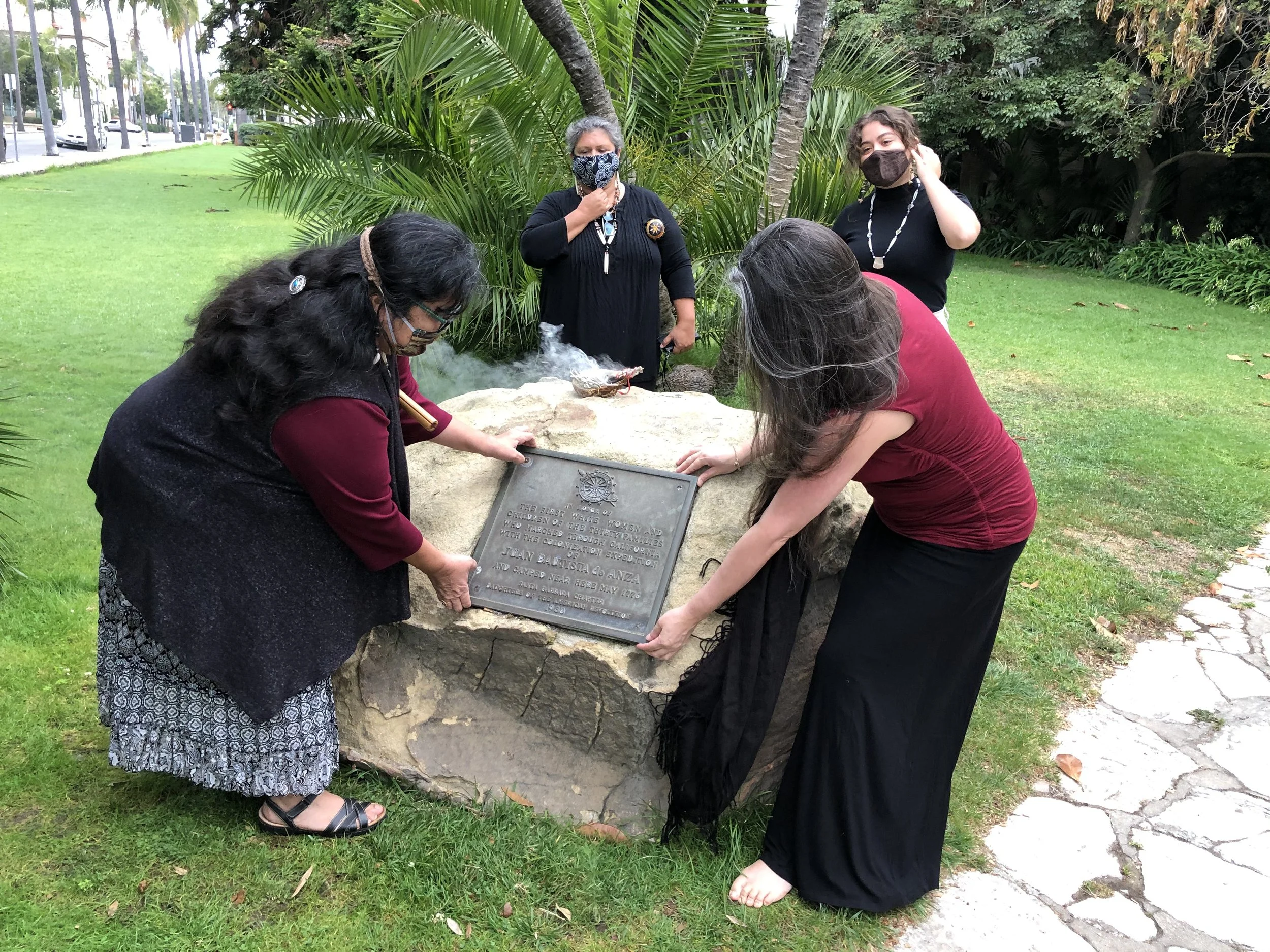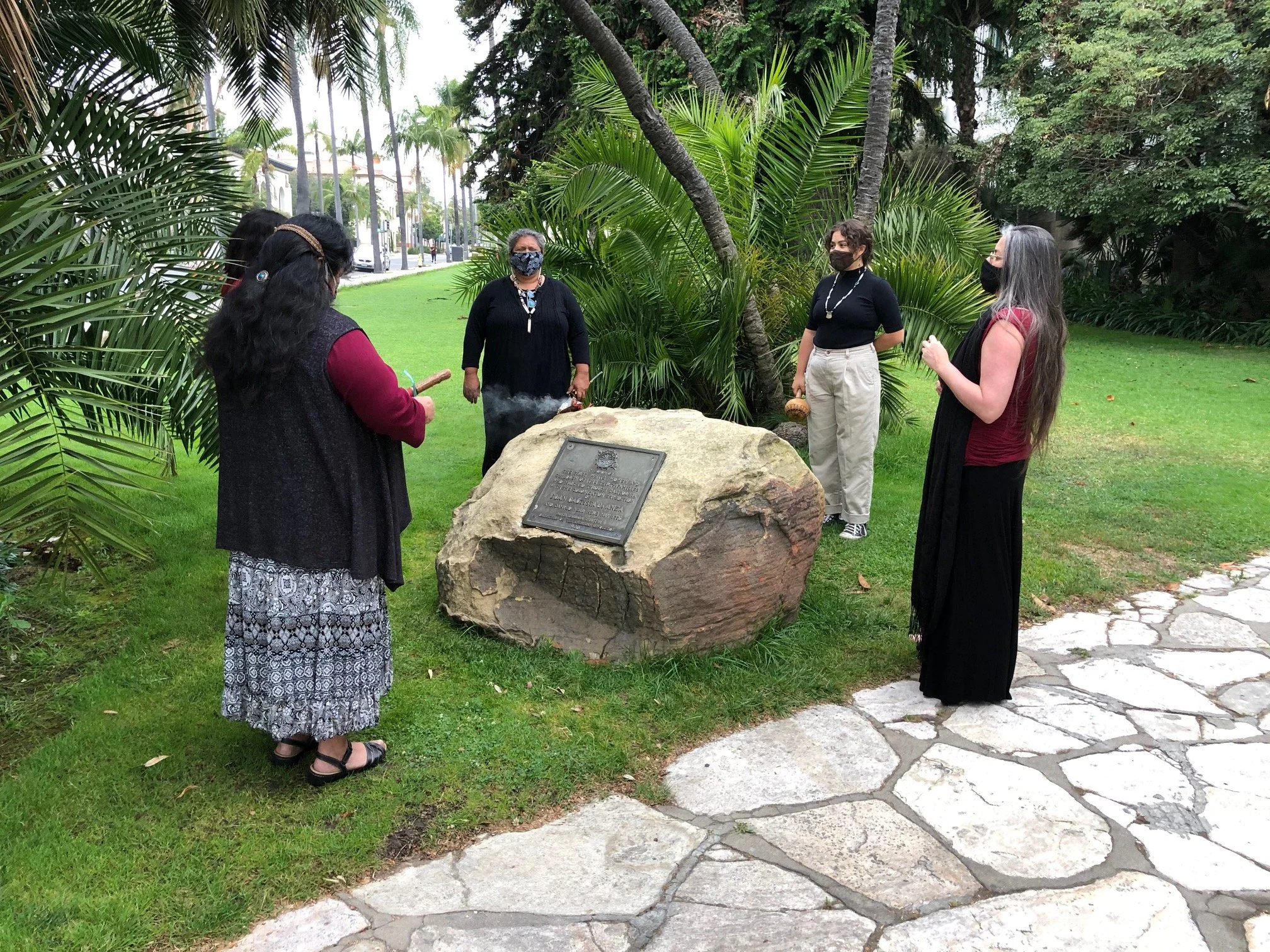Removing Symbols of Colonization
The sandstone boulder sat quiet for decades, wedged beside the Santa Barbara Courthouse entrance, its plaques speaking loudly but falsely about the past. They praised the first “white men,” “white women,” and “white children” who marched through our homelands in 1769 and 1776—ignoring the people who had lived here for more than 10,000 years.
The two plaques read:
“IN HONOR OF GOV. GASPAR DE PORTOLA
HIS OFFICERS AND SOLDIERS AND FRAY JUAN CRESPI (DIARIST) THE FIRST WHITE MEN TO MARCH THROUGH THE WILDERNESS OF CALIFORNIA, ARRIVED AT SANTA BARBARA AUG. 18-20, 1769 AND CAMPED IN THIS VICINITY. SANTA BARBARA CHAPTER DAUGHTERS OF THE AMERICAN REVOLUTION 1927”
“IN HONOR OF THE FIRST WHITE WOMEN AND CHILDREN OF THE THIRTY FAMILIES WHO MARCHED THROUGH CALIFORNIA WITH THE COLONIZATION EXPEDITION OF JUAN BAUTISTA DE ANZA AND CAMPED NEAR HERE MAY 1776 SANTA BARBARA CHAPTER DAUGHTERS OF THE AMERICAN REVOLUTION 1938”
We know who walked these lands first. Before the soldiers in uniform, before the friars with crosses, before the words “colonization expedition” were ever written, we were here. Our ancestors were here, in villages that stretched from these coastal bluffs to the Channel Islands, with stories embedded in every tide pool and oak grove. The plaques didn’t speak of that. They only honored colonizers—the men who brought the mission system, whose “wilderness” was in fact our homeland, and who measured their progress by the erasure of our people. Their words reduced thousands of years of Indigenous life to a footnote, framing conquest as noble and white skin as historic.
Last week, our Coastal Band women came to that boulder in ceremony. They stood at the foot of the Courthouse—an iconic symbol of justice—and gently removed the bronze plaques from the stone. When they lifted the plaques from the stone, they lifted generations of pain with them. And made space—for truth, for healing, for our children to walk by that courthouse and see that their people stood up, together, to tell a fuller story.
We are grateful to the community members who joined us, and to leaders like Supervisor Gregg Hart and Council member Oscar Gutierrez, who called out the racism embedded in these markers and helped make their removal possible. We know this is not the end of the work. There are other plaques, other names, other stones etched with silence or injustice.
Coastal Band members Mia Cordero, Alicia Cordero, and Annette Cordero came together in ceremony, removing the plaque that had stood since 1927.



